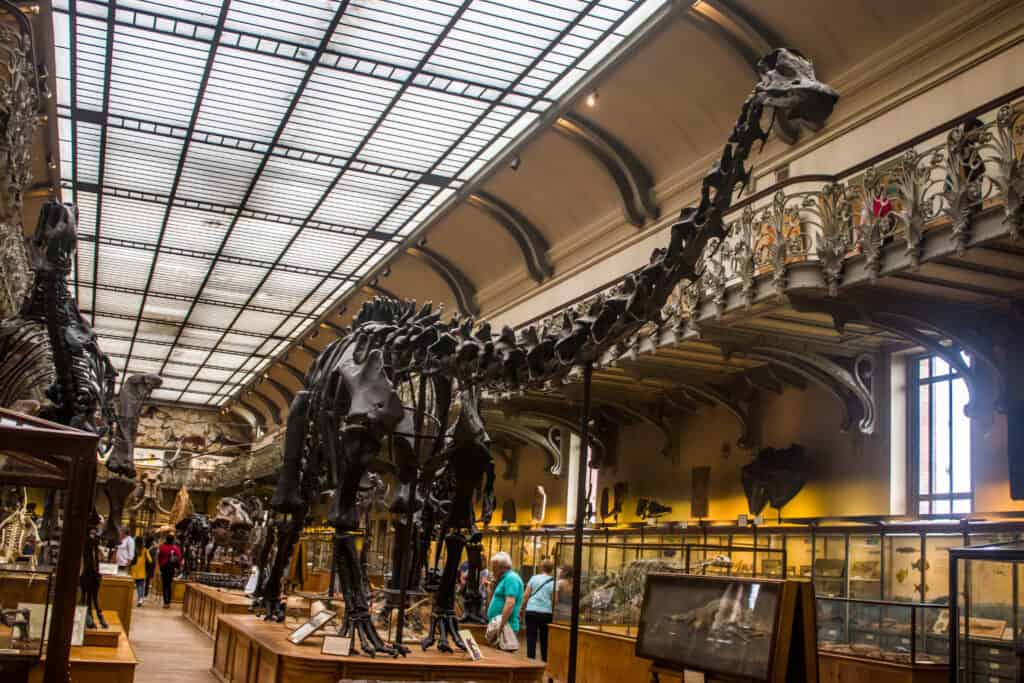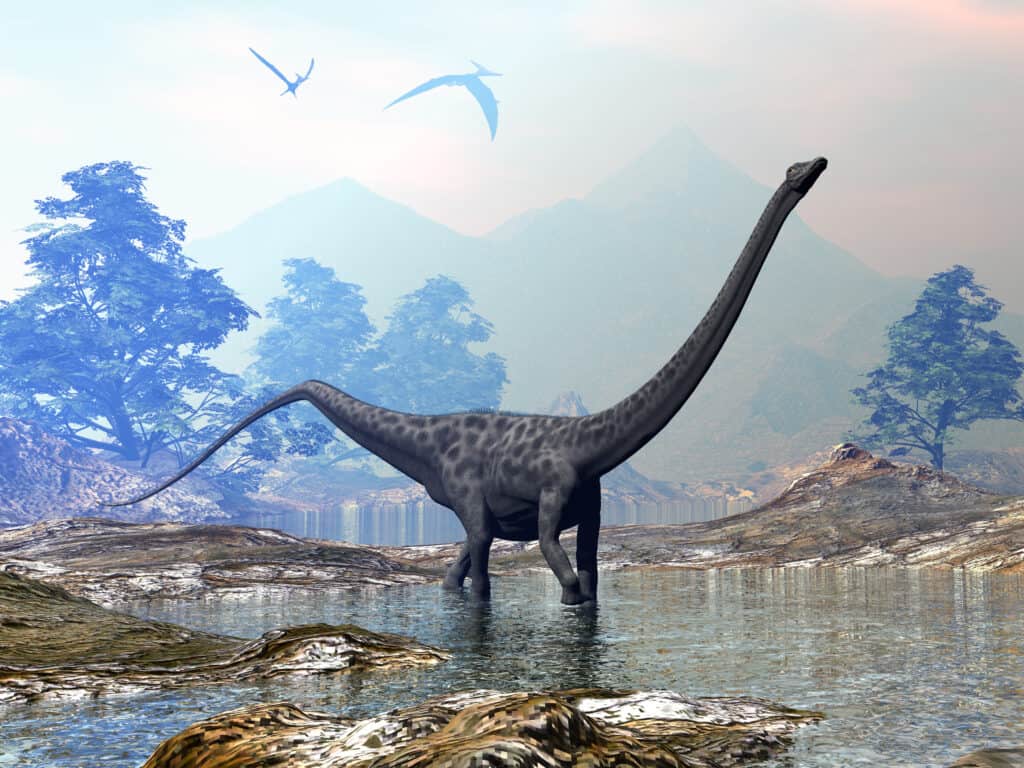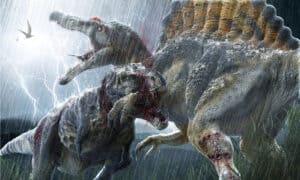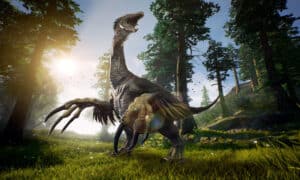Every dinosaur started out small: 33 pounds or less, fresh out of the egg. At their adult size, hundreds of species were no bigger than a house pet or barnyard animal. But truth be told, the dinosaurs most of us are interested in are the behemoths that grew big enough to look in your second-floor windows. If you’re fascinated by the tallest, heaviest, longest dinosaurs, diplodocus is probably one of your favorites. It’s the longest dinosaur ever discovered. But just how big was the biggest diplodocus?

Diplodocus is the sauropod most often displayed, due to the popularity of the species.
©Danny Ye/Shutterstock.com
Diplodocus Facts
Here are some of the most important things to know about the diplodocus:
- They were sauropods that lived in the late Jurassic period, about 154 to 152 million years ago.
- A great many fossils of diplodocus have been found in Colorado, Montana, Utah, and Wyoming.
- Of all sauropods, diplodocus is the one most displayed in museums.
- The diplodocus had an extremely long neck and whip-like tail. The tail may have been a counterbalance to the neck. It may also have been used as a defensive weapon.
- Some species of diplodocus had spines along their tails like iguanas.
- They were herbivores feeding mainly on conifers, moss, and tree ferns with pencil-like teeth.
- Standing on all fours, they could eat vegetation up to 13 feet off the ground. However, they could stand on their back legs and reach up to an incredible 36 feet high!
- Diplodocus was one of the slowest dinosaurs, moving at about five to nine mph.
- Paleontologists believed they moved around in herds, which helped in their self-defense.
- They had very small brains, so it’s been said they were barely smarter than the plants they ate!
Was the Biggest Diplodocus a Seismosaurus?

©Elenarts/Shutterstock.com
The diplodocus is not just one species, but several. As the most well-known species, D. carnegii was about 90 feet long. However, at the beginning of the 21st century, paleontologists began to argue that seismosaurus is actually a kind of diplodocus. The scientific name of this creature is now diplodocus hallorum. It could grow 120 feet or more in length, about a third the length of a football field. This makes seismosaurus by far the biggest diplodocus that ever lived. It would have weighed about 100 tons. That’s as much as 14 African elephants or 16 school buses!
Where Can You See a Diplodocus?
If you’d like to see a diplodocus skeleton for yourself, here are a few places that have them on display. Note that the seismosaurus, the biggest diplodocus on record, is located at the New Mexico Museum of Natural History:
- Berlin – Natural History Museum
- Denver – Denver Museum of Nature and Science
- London – Natural History Museum
- New Mexico – Museum of Natural History
- Pittsburgh – Carnegie Museum of Natural History
- Washington, D.C. – Smithsonian National Museum of Natural History
The photo featured at the top of this post is © Daniel Eskridge/Shutterstock.com
Thank you for reading! Have some feedback for us? Contact the AZ Animals editorial team.







